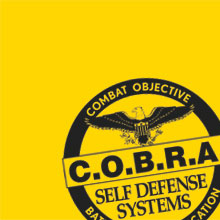
Have you ever asked your children what a stranger looks like? I have. I ask kids all the time. They invariably say it’s a fat ugly man who smokes. Given that a stranger is simply anyone that your family doesn’t know well, we all know this description is very wrong!
But what is most wrong about it is the fact that children naively believe that “bad strangers” will always look scary, like the villains in cartoons. This is not only untrue, but it’s dangerous for children to think this way. Pretty strangers can be just as dangerous as the not-so-pretty ones. Strangers with ill intent can be young or old, thick or thin, black or white, woman or man. Typically, of course, they are all men.
But contrary to what kids think, they will not stink and have a cigarette hanging from their mouth. Rather, the ‘naughty man’ will actually be quite friendly. He’ll say he knows your mom. He’ll offer you a treat. He’ll have free stuff in his car for you.
The point we are getting at is that, when you talk to your children about strangers, you must explain that no one can tell if strangers are nice or not nice just by looking at them. Don’t make it seem like all strangers are bad. If children need help – whether they’re lost, being threatened by a bully, or being followed by a stranger – the safest thing for them to do in many cases is to ask a stranger for help.
This is particularly important coming up to school holidays and Christmas time when we are out and about in large crowds and public spaces more and more. What would your child do if approached by a stranger at the beach? At the Christmas Carols in the park? At the busy park or playground? Maybe even in your own front yard?
You can make it safer and easier for your children by showing them ‘safe strangers’ – that is, strangers that are okay to trust.
Safe strangers are people children can ask for help when they need it. Police officers and firefighters are two examples of very recognizable safe strangers. Teachers, principals, and librarians are adults children can trust too, and they are easy to recognize when they’re at work. But make sure that you emphasize that whenever possible, children should go to a public place to ask for help.
You can help your children recognize safe strangers by pointing them out when you’re out in your town. Also show your children places they can go if they need help, such as local stores and restaurants and the homes of family friends in your neighborhood.
But above all, please tell them all “naughty men” are not ugly!!!
Please share to help spread this important message. Because one child is too many

